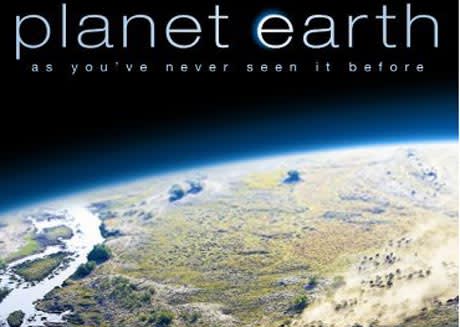More than a nature doc, more than simply breathtaking images of the worlds natural wonders, this BBC series ⎯ the most ambitious, expensive undertaking of its kind ever ⎯ is nothing less than possibly the most important historical document of our living world. One that, if you dive into the final extra disc on this ambitious set called "The Future, is disappearing by the day. Here then, in hour-long episodes organised thematically ("Forests, "Caves, "Fresh Water, "Deep Oceans), we find the greatest, the biggest, the oddest and the rarest of the world, from the never-before-filmed Himalayan snow leopard to mating birds of paradise in Borneo to ravaging at-sea shark attacks. Filmed with advanced hi-def cameras, Planet Earth reaches one spectacular achievement after another, particular in the realm of full-scale predator attacks from African lions taking a down a healthy adult elephant to a wolf chasing a caribou for miles, many of these beginning-to-end attack sequences have never been seen, filmed, nor understood until now. Yet the fact that scientists still dont even know where the worlds largest mammal, the great blue whale ⎯ the biggest thats ever existed in history ⎯ goes to mate is indicative of just how little understanding we have. Enhanced by ten-minute "diaries attached to these hour-long episodes, each segment of Planet Earth is a visionary achievement, a science lesson and a subtle lecture on conservation. Until the aforementioned extra discs, on the future of the planet, very little human interaction or presence is felt or discussed throughout the series. Spectacular not just because so many of these sights have never been seen before but because so many never will be again.
(Warner)Planet Earth: The Complete Series

BY James KeastPublished May 23, 2007